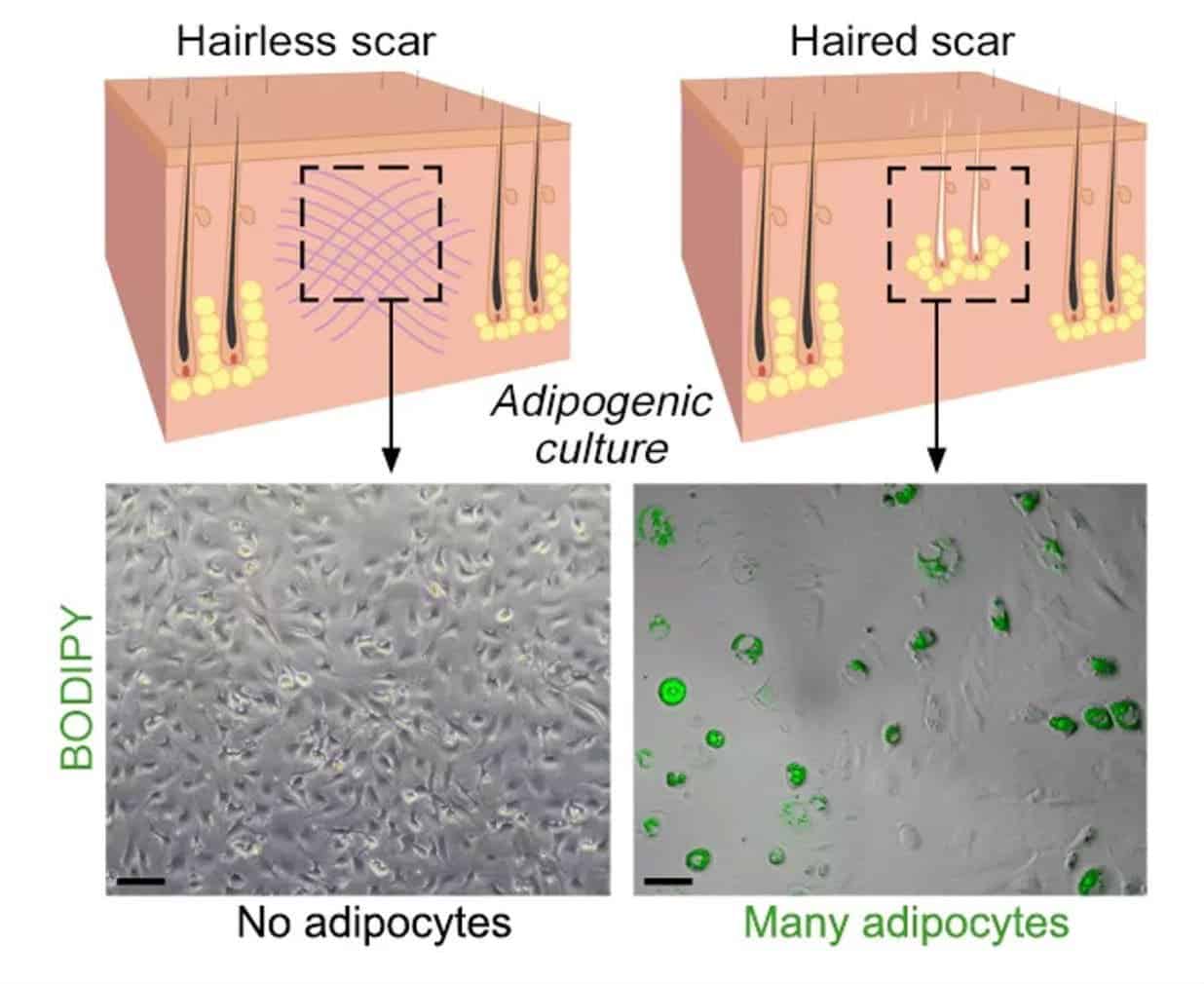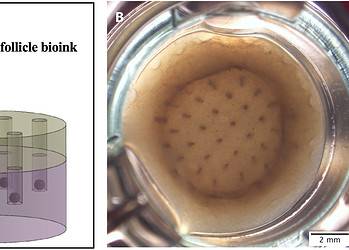Only a few of us can brag about having the perfect skin, with no scars. Some of the rest of world’s population might think about removing nasty-looking scar tissue if they had a chance. Alas, for existing scars, science has no proper solution yet.
But, for scars which have yet to form, there might be a chance. Researchers at the Perelman School of Medicine at the University of Pennsylvania, in connection with the Plikus Laboratory for Developmental and Regenerative Biology at the University of California, Irvine, found a way to heal wounds without scarring. Their secret? Hair follicles.

Scar tissue lacks two main components of regular skin: hair follicles and fat cells. The most common cells found in healing wounds are myofibroblasts, which were thought to only form scars. Researchers discovered that the already present myofibroblasts could change into fat cells that do not cause scarring. Until now, scientists thought that this biological phenomenon couldn’t be reproduced in mammals, only in amphibians.
“Essentially, we can manipulate wound healing so that it leads to skin regeneration rather than scarring,” said George Cotsarelis, MD, the chair of the Department of Dermatology and the Milton Bixler Hartzell Professor of Dermatology at Penn, and the principal investigator of the project in a press statement. “The secret is to regenerate hair follicles first. After that, the fat will regenerate in response to the signals from those follicles.”

Researchers carried out experiments on mice and human skin cultures and found that hair follicles and fat cells developed separately, but not independently. The hair follicle develops first, then releases biochemical signals that change the surrounding myofibroblasts in adipocytes. A key role in fat cell development is played by a factor called Bone Morphogenetic Protein (BMP).
“Typically, myofibroblasts were thought to be incapable of becoming a different type of cell,” Cotsarelis said. “But our work shows we have the ability to influence these cells, and that they can be efficiently and stably converted into adipocytes.” This was shown in both the mouse and in human keloid cells grown in culture.

Maksim Plikus, an assistant professor of Developmental and Cell Biology at the University of California and the study’s lead author, says that now dermatologists now have the opportunity to fully regenerate wounds, and not leave any scar tissue behind. Plikus began this research as a postdoctoral fellow in the Cotsarelis Laboratory at Penn, and the two institutions have continued to collaborate ever since.
These findings are truly remarkable for dermatology and might not only improve wound healing but also lead to new cosmetic procedures. Fat cells are lost in different situations, such as during treatment for HIV or because of aging — the natural loss of adipocytes, especially in the facial skin, produces permanent, deep wrinkles. So, ladies, you might just want to keep at least some fat cells.
“Our findings can potentially move us toward a new strategy to regenerate adipocytes in wrinkled skin, which could lead us to brand new anti-ageing treatments,” Cotsarelis added.
The ground-breaking dermatology paper was published in the journal Science.






